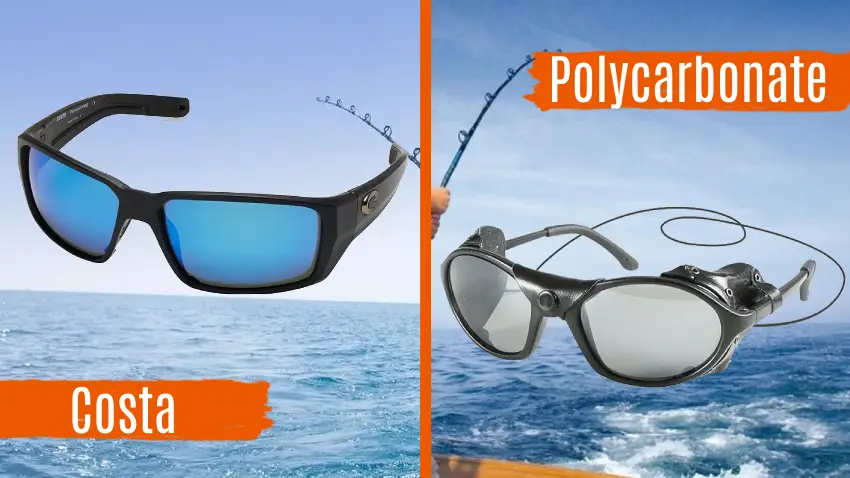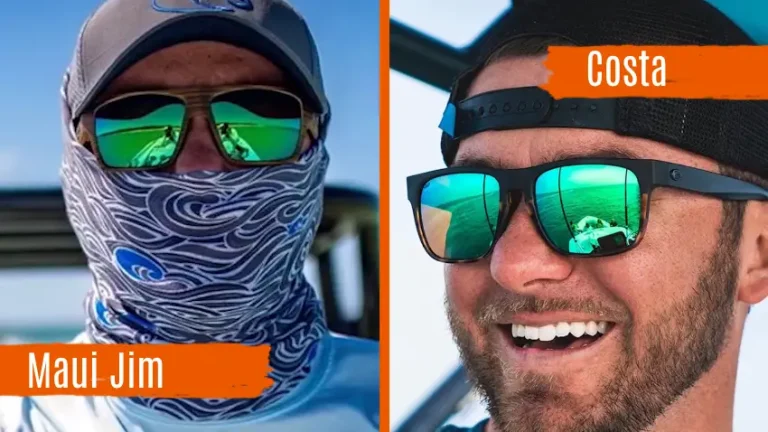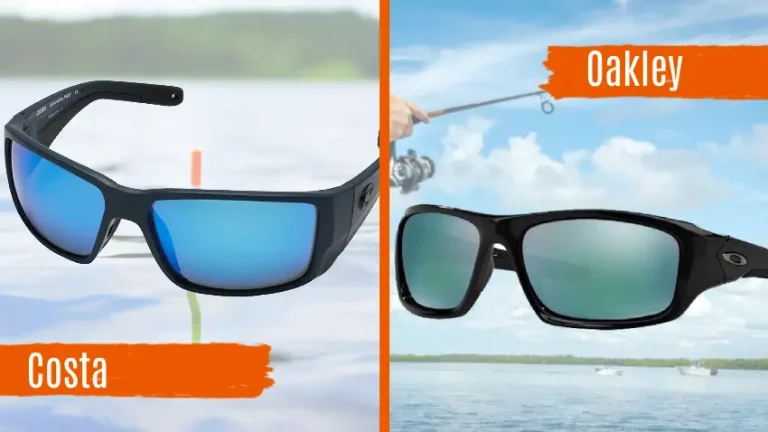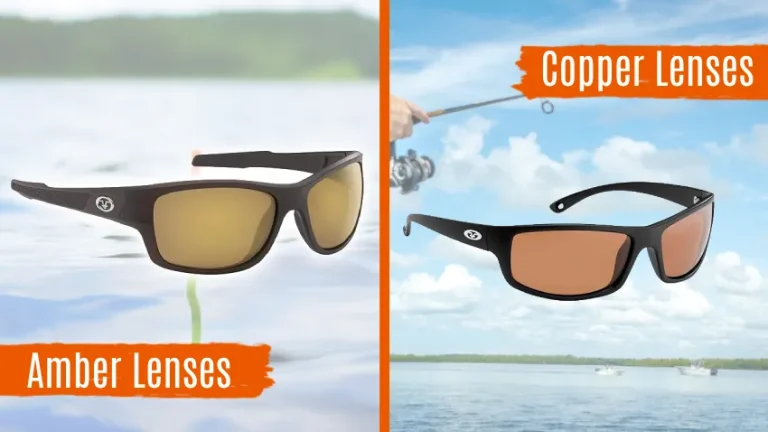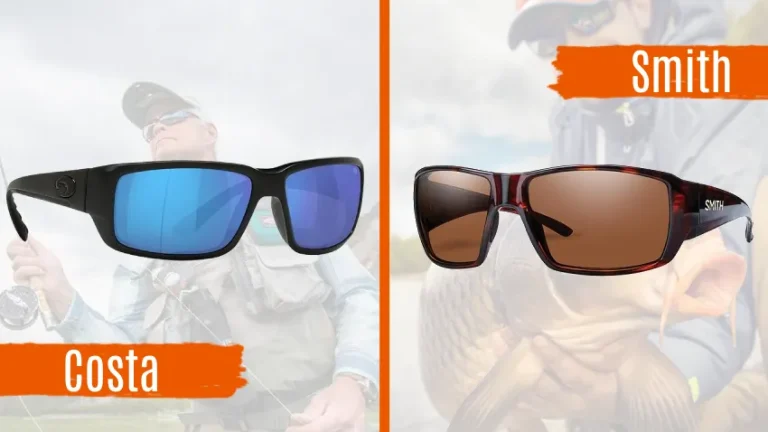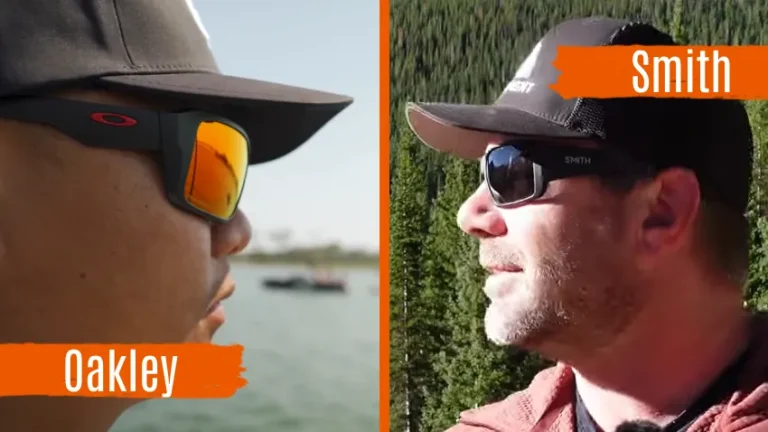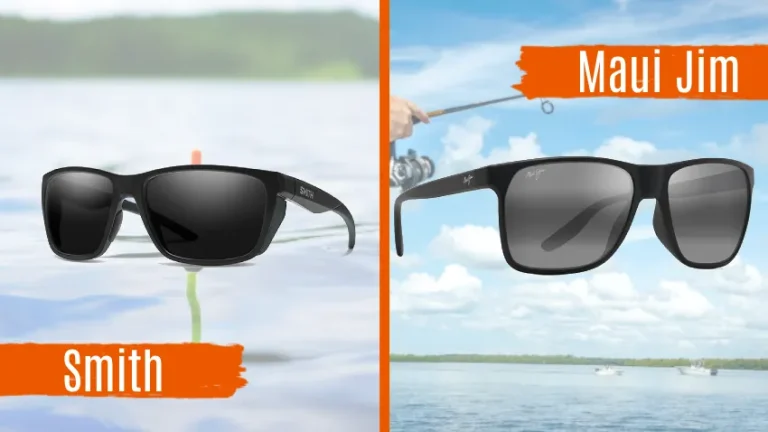Costa Glass vs Polycarbonate Fishing Sunglass: 6 Key Differences
Fishing sunglasses play a significant role in the success or failure of your outdoor adventure. Two popular options are Costa Glass and Polycarbonate lenses. Each has advantages and disadvantages, but there are some differences between them.
Costa Glass lenses are naturally scratch-resistant. These glass lenses offer superior optical clarity and visual acuity compared to polycarbonate lenses.
However, polycarbonate lenses are much lighter and more comfortable to wear. These lenses provide superior impact resistance and UV protection compared to glass lenses.
Throughout this article, we’ll discuss the technical details and compare the advantages and disadvantages of these lenses. So strap in and get ready to make an informed decision for the best fishing sunglasses.
Costa Glass vs Polycarbonate Fishing Sunglass: Primary Differences
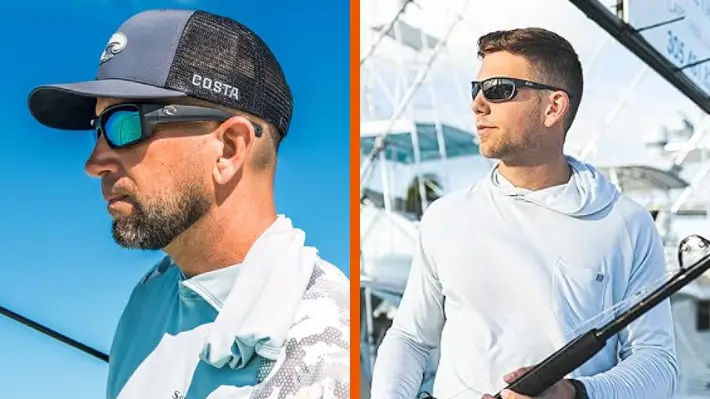
When choosing between Costa Glass and Polycarbonate fishing sunglasses, there are several crucial points to consider.
- Optical clarity
- Sunglass weight
- Scratch resistance
- Impact resistance
- UV protection
- Price
1. Optical Clarity
Costa glass lenses are known for their superior optical clarity during fishing. They’re commonly used in precise optical instruments like microscopes and telescopes. Glass lenses provide excellent visual acuity, allowing you to see details precisely.
Meanwhile, while offering good clarity for everyday use, polycarbonate lenses may not match the optical clarity of glass lenses. While polycarbonate lenses are lightweight and impact-resistant, they may have slight distortions or lower visual acuity than glass lenses.
Regarding fishing sunglasses, where clear vision is crucial for spotting fish and navigating through water, Costa Glass lenses may be the preferred choice for optimal optical clarity.
2. Sunglass Weight
Costa Glass lenses are heavier than Costa polycarbonate lenses, which can affect the weight of your fishing sunglasses. The added weight can cause discomfort, especially when combined with the physical demands of fishing.
In contrast, polycarbonate lenses are significantly lighter, providing all-day comfort without compromising visual quality. The reduced weight of polycarbonate lenses allows for enhanced mobility and reduced strain on your face and nose during long fishing trips.
3. Scratch Resistance
Costa Glass lenses are naturally scratch-resistant, making them less likely to get scratched without additional coatings. This is due to the hard and dense nature of glass.
Conversely, polycarbonate lenses are more prone to scratches and may require an anti-scratch coating for added durability. Polycarbonate is a softer material than glass and is, therefore, more susceptible to scratches from everyday use.
4. Impact Resistance
Regarding impact resistance, polycarbonate fishing sunglasses outperform Costa Glass due to their engineered flexibility and ability to withstand hard impacts without shattering.
Glass lenses lack the necessary durability to withstand strong impacts, making them less suitable for fishing, where objects are at higher risk of hitting the lenses.
Polycarbonate lenses, however, are designed to flex when struck, absorbing the impact and preventing the lens from shattering. This engineered flexibility not only ensures the safety of your eyes but also prolongs the lifespan of the sunglasses.
5. UV Protection
When you wear fishing sunglasses with polycarbonate lenses, you’re protecting your eyes from harmful rays. Unlike glass lenses, which lack built-in UV protection and require an additional coating, polycarbonate lenses inherently block 100% of UV rays, including UVA, UVB, and UVC.
As prolonged exposure to UV radiation can cause cataracts, macular degeneration, and corneal sunburn, this UV defense is crucial for your eye health.
6. Price
Glass lenses are known for their premium quality but have a higher price tag than polycarbonate lenses. While glass lenses offer superior clarity and scratch resistance, they can be more expensive to replace if they break or get damaged.
On the other hand, polycarbonate lenses are the more budget-friendly option. They’re lighter and offer excellent impact resistance, making them great for active outdoor activities like fishing.
Glass or Polycarbonate: Tips for Purchasing Fishing Sunglasses
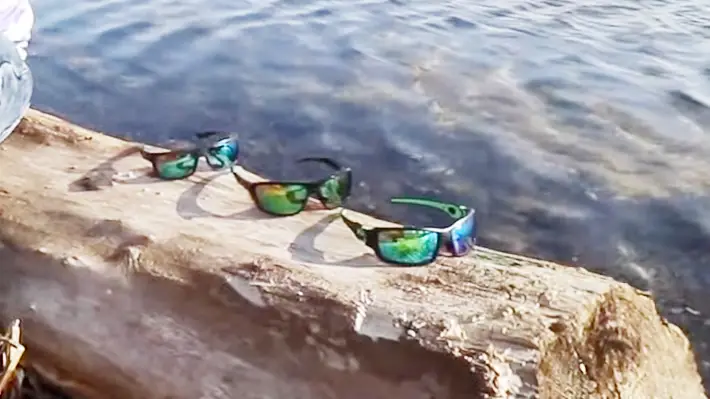
When purchasing fishing sunglasses, there are several important factors to consider.
1. Polarized Lenses
Glass lenses offer superior optical clarity and scratch resistance, making them popular among anglers. They provide excellent color perception and reduce glare effectively.
However, Polycarbonate lenses are a good option if you prioritize durability and comfort. While they may not offer the same level of optical clarity as glass lenses, they still provide adequate glare reduction and underwater visibility.
2. Lens Color
Consider the lens color that best suits your fishing needs and enhances visibility. The color of the lenses plays a crucial role in determining how well you can see in different fishing conditions.
Brown, copper, or amber lenses are recommended for bright, sunny days. These colors enhance contrast and reduce glare, allowing you to see more clearly in bright light.
On the other hand, for overcast days or low-light conditions, yellow or green lenses can provide better visibility. These colors help to increase brightness and enhance depth perception, making it easier to spot fish and other objects underwater.
3. UV Protection
Choose Polycarbonate lenses to ensure optimal UV protection for your eyes while fishing. Polycarbonate lenses are lightweight and impact-resistant, making them a great choice for outdoor activities like fishing. They also provide 100% UV protection and are less likely to shatter if dropped or hit.
4. Lens Coatings
Regularly apply anti-reflective and hydrophobic coatings to ensure optimal protection and performance for your fishing sunglasses, as they enhance clarity and prevent water spots.
Anti-reflective coatings are designed to reduce glare and reflection on the lens surface. These coatings improve visual clarity and reduce eye strain by minimizing the amount of light reflected into your eyes.
Hydrophobic coatings, on the other hand, repel water and prevent water spots from forming on the lens surface. This is particularly important for fishing as water spots can obstruct your vision and make it difficult to spot fish or navigate through the water.
5. Frame Style
The frame style of your sunglasses is crucial for both comfort and functionality. Wraparound frames are recommended as they provide enhanced protection by blocking peripheral light and reducing glare. This is especially important when fishing, as it gives you a clear and unobstructed view of the water.
Additionally, lightweight frames are ideal for long fishing days as they minimize pressure on your nose and ears. Comfort is key when spending hours on the water.
6. Floatable Sunglasses
When selecting fishing sunglasses, consider whether the floatable frame is made of glass or polycarbonate. Floatable sunglasses are a great choice for anyone who spends time on the water and wants to protect their eyes from the sun’s harmful rays.
Glass frames offer a classic and stylish look but tend to be heavier and less buoyant than polycarbonate frames. Polycarbonate frames are lightweight and extremely durable. They’re also more buoyant, making them less likely to sink if they accidentally fall into the water.
Are polycarbonate or glass lenses good for fly fishing?
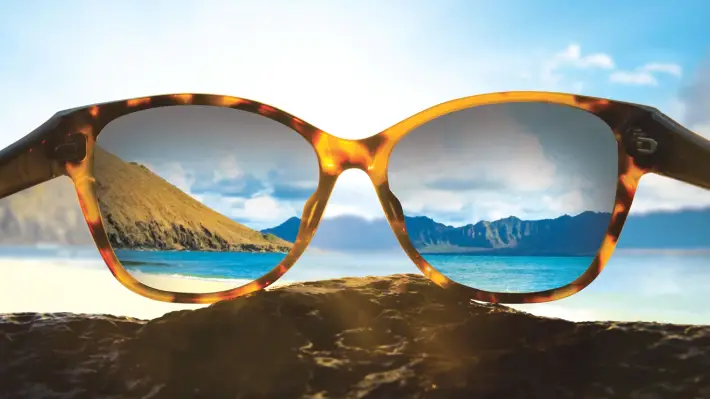
If you’re looking for the best lenses for fly fishing in Kansas or other states, consider whether polycarbonate or glass lenses suit your needs. Glass lenses are generally considered superior on an optical level, offering clear vision and optimal visual acuity.
Conversely, fishing sunglasses with polycarbonate lenses offer superior protection against glare and harmful UV rays. This is particularly important when fishing in bright sunlight or near reflective surfaces like water.
What are the drawbacks of polycarbonate lenses?
One major drawback is that polycarbonate lenses are easily scratched. While they may be highly impact-resistant, their surface can be quickly marred by everyday objects or even cleaning. This can lead to reduced visual clarity and potentially compromise the integrity of the lens over time.
Additionally, polycarbonate lenses have low optical clarity compared to other lens materials. They have the lowest Abbe value, which may cause more chromatic aberration, distortion, and glare than lenses made from materials with higher Abbe values.
Costa Glass or Polycarbonate: Choose the Perfect Fishing Sunglass
The choice between Costa Glass and Polycarbonate is crucial for fishing sunglasses.
Even though both options have advantages, Costa Glass lenses’ durability and clarity can’t be overstated. Polycarbonate lenses are lightweight, offer impact resistance, and have built-in UV protection but are more prone to scratches.
Ultimately, the right lens will depend on your individual needs and preferences. Consider your budget, the fishing environment, and how often you plan to wear your sunglasses. So, research and try both lenses before making your final decision.

